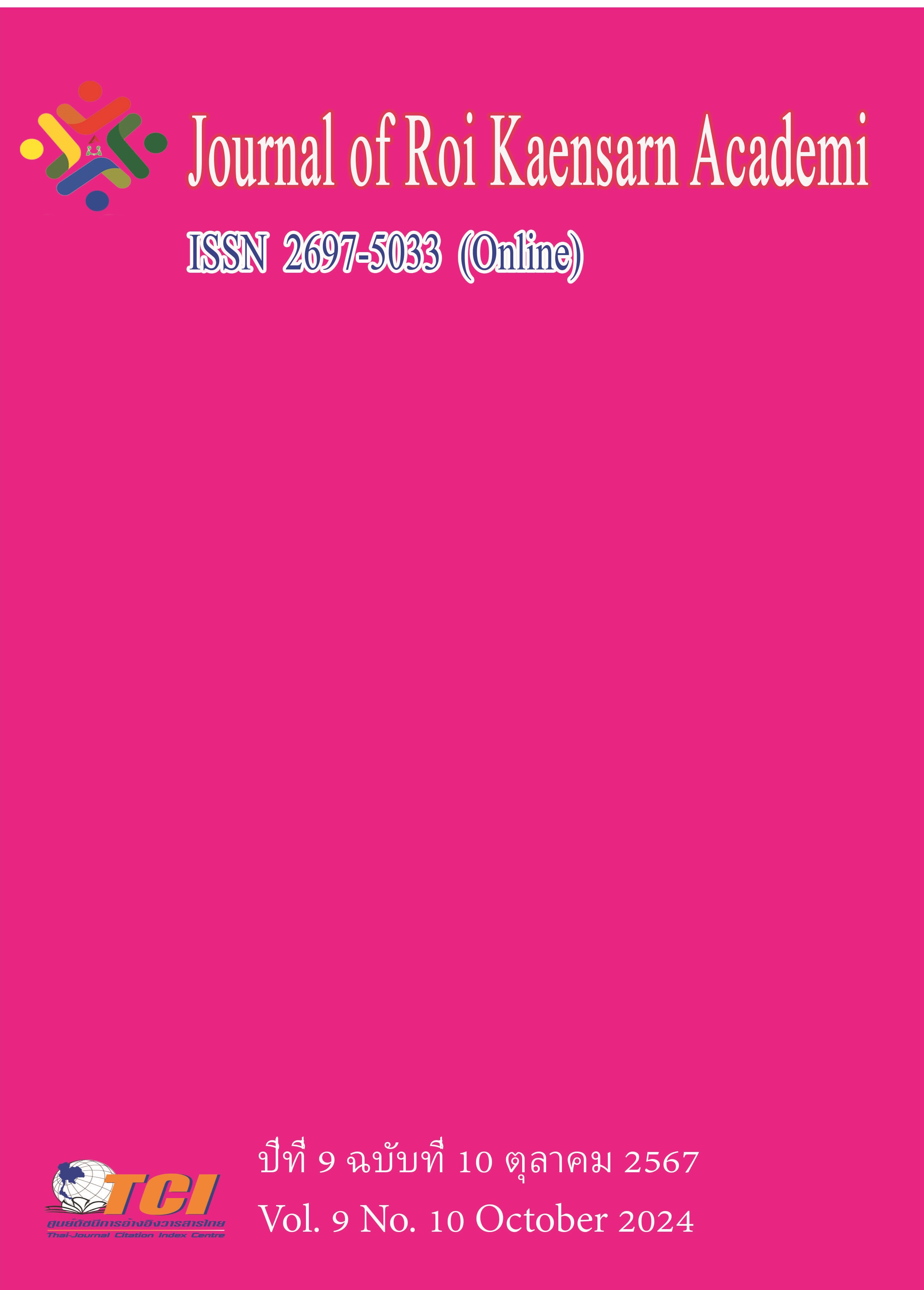การวิเคราะห์องค์ประกอบรูปแบบการบริหารจัดการสมาคมกีฬาฟุตวอลเลย์แห่งประเทศไทย สู่ความเป็นเลิศ
Main Article Content
บทคัดย่อ
การวิจัยเชิงปริมาณนี้มีวัตถุประสงค์เพื่อศึกษาและวิเคราะห์องค์ประกอบรูปแบบการบริหารจัดการสมาคมกีฬาฟุตวอลเลย์แห่งประเทศไทยสู่ความเป็นเลิศ กลุ่มตัวอย่างเป็นผู้บริหาร เจ้าหน้าที่ ผู้ฝึกสอนและนักกีฬา ปี 2567 จำนวน 285 คน ได้มาจากสุ่มตัวอย่างจากการสุ่มแบบแบ่งชั้น เครื่องมือที่ใช้ในการวิจัยเป็นแบบสอบถามรูปแบบการบริหารจัดการสมาคมกีฬาฟุตวอลเลย์แห่งประเทศไทยสู่ความเป็นเลิศ มีค่า IOC อยู่ระหว่าง 0.80-1.00 และค่า α = 0.88 วิเคราะห์ข้อมูลโดยการหาค่าเฉลี่ย และค่าเบี่ยงเบนมาตรฐาน วิเคราะห์องค์ประกอบเชิงยืนยันอันดับที่สอง โดยวิธี Maximum Likelihood (ML) ตรวจสอบความสอดคล้องกลมกลืนกับข้อมูลเชิงประจักษ์ด้วย ค่า p-value ไค-สแควร์สัมพัทธ์ ดัชนี GFI, AGFI, NFI, Standardized RMR และ RMSEA ผลการวิจัยพบว่า 1) องค์ประกอบรูปแบบการบริหารจัดการสมาคมกีฬาฟุตวอลเลย์แห่งประเทศไทยสู่ความเป็นเลิศอยู่ในระดับมากทุกด้าน 2) โมเดลรูปแบบการบริหารจัดการสมาคมกีฬาฟุตวอลเลย์แห่งประเทศไทยสู่ความเป็นเลิศสอดคล้องกลมกลืนกับข้อมูลเชิงประจักษ์ โดยด้านที่มีน้ำหนักความสำคัญมากที่สุด 3 ลำดับแรก คือ การจัดองค์กรการบริหารจัดการและนโยบายด้านกีฬาของรัฐ การสร้างพื้นฐานด้านกีฬาและขยายฐานนักกีฬาและผู้เกี่ยวข้องด้านกีฬา และการพัฒนาผู้ฝึกสอนและบุคลากรด้านกีฬา
Article Details
References
บุญชม ศรีสะอาด. (2560). การวิจัยเบื้องต้น. (พิมพ์ครั้งที่ 10). กรุงเทพมหานคร: สุริยาสาส์น
นภพร ทัศนัยนา. (2565). แนวทางการส่งเสริมกีฬาจากกีฬาพื้นฐานสู่กีฬาอาชีพสําหรับประเทศไทย. วารสารสุขศึกษา พลศึกษา และสันทนาการ. 48 (1), 154-165.
สมาคมกีฬาฟุตวอลเลย์แห่งประเทศไทย. (2553). ประวัติและรูปแบบการแข่งขัน. ออนไลน์. สืบค้นเมื่อ 12 พฤษภาคม 2567. แหล่งที่มา: https://footvolley.org/?page_id=27
สลักจิตร คณะฤทธิ์ ต่อศักดิ์ แก้วจรัสวิไล ศุภวรรณ วงศ์สร้างทรัพย์. (2566). กลยุทธ์การส่งเสริมกีฬาฟุตวอลเลย์ในประเทศไทย. วารสารวิทยาศาสตร์และเทคโนโลยี มหาวิทยาลัยราชภัฏเพชรบูรณ์. 3 (2), 1-8.
Cohen, J. (1977). Statistical power analysis for the behavioral sciences (Rev. ed.). Lawrence Erlbaum Associates, Inc.
De Bosscher, V. (2015). Theory Of Sports Policy Factors Leading To International Sporting
Success (SPLISS) 1. In Routledge handbook of theory in sport management (pp. 93-113). Routledge.
Diamantopoulos, A. and Siguaw, J.A. (2000). Introducing LISREL. London: Sage Publications.
Henry, I., Dowling, M., Ko, L. M., & Brown, P. (2020). Challenging the new orthodoxy: A critique of SPLISS and variable-oriented approaches to comparing sporting nations. European sport management quarterly. 20 (4), 520-536.
Fan, M., Chen, X., & Zhang, H. (2023, September). An Analysis of Macro-influencing Factors of FIFA World Cup Competition Performance: Based on the SPLISS Theory Perspective. In International Symposium on Computer Science in Sport (pp. 95-104). Singapore: Springer Nature Singapore.
Faul, F., Erdfelder, E., Buchner, A., & Lang, A. G. (2009). Statistical power analyses using G* Power 3.1: Tests for correlation and regression analyses. Behavior research methods. 41 (4), 1149-1160.
Fitriyani, A., Rahayu, S., & Hartono, M. (2024). Analysis of the Implementation of the Sports Achievement Development System in Koni, Kendal Regency. Journal of Physical Education and Sports. 13 (1), 28-36.
Hair, Jr., J. F., Black, W. C., Babin, B. J., Anderson, R. E. & Black, R. L., W.C. (2019). Multivariate Data Analysis (8th ed.). Upper Saddle River, NJ: Pearson Prentice Hall.
Listiarini, D., Kurniawan, R., & Paramitha, ST (2024). Perspective SPILSS Models forAnalinging the Development of Paragliding Athletes in Central Java. KnE Social Sciences , 167-179.
Ouyang, Y., Lee, P. C., & Ko, L. M. (2022). A systematic review of the development of sport policy research (2000–2020). Sustainability. 15 (1), 389.
Van der Roest, J. W., De Bosscher, V., & Shibli, S. (2022). High-performance sport systems: current developments and future challenges. In A research agenda for sport management (pp. 149-166). Edward Elgar Publishing.
Vukadinović, S., Simović, S., & Jovanović, J. (2021). Competitiveness of the sport system in the Republic of Srpska. Journal of Physical Education and Sport. 21 (1), 416-424.
